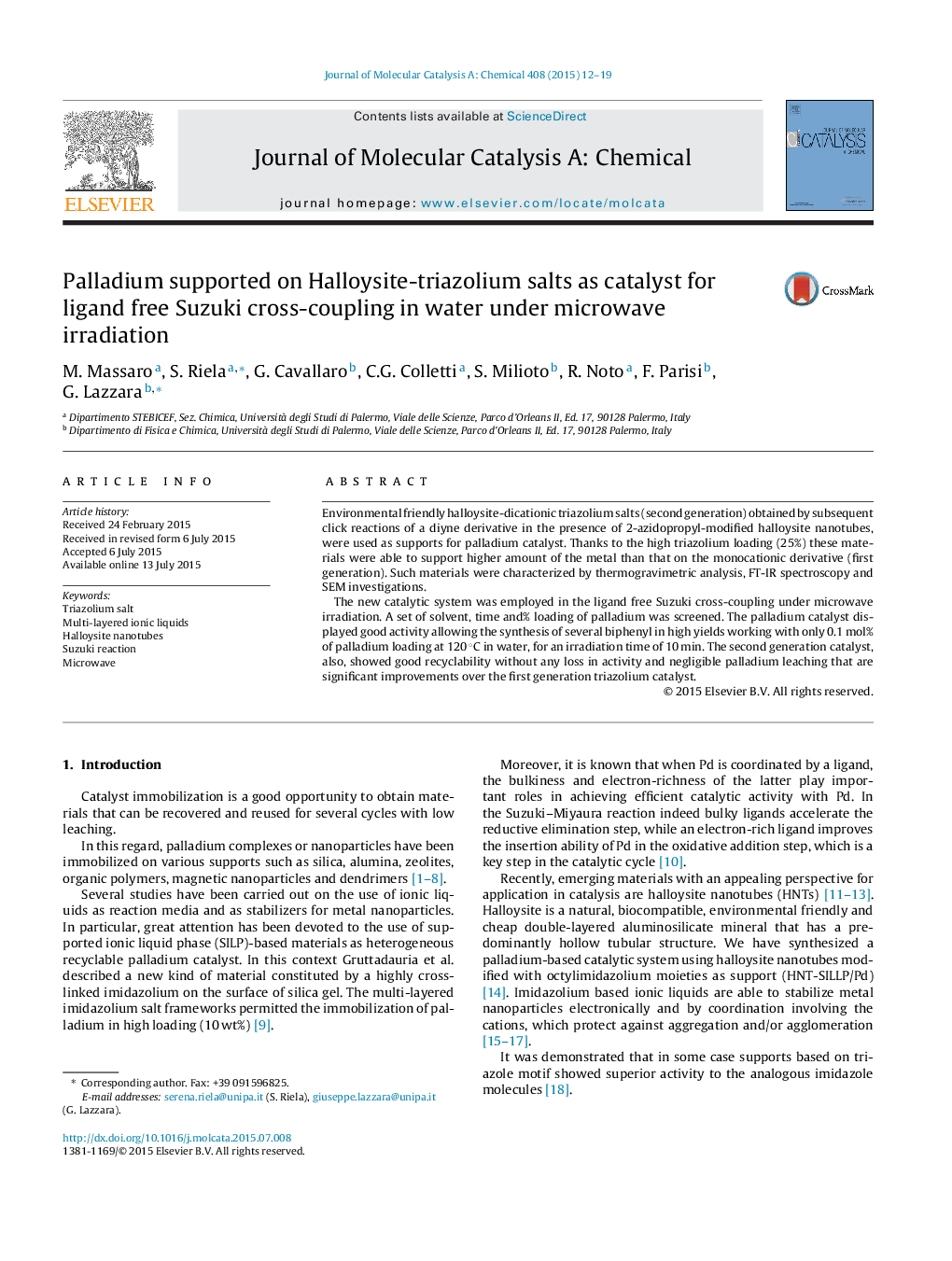| Article ID | Journal | Published Year | Pages | File Type |
|---|---|---|---|---|
| 64855 | Journal of Molecular Catalysis A: Chemical | 2015 | 8 Pages |
•Triazolium materials were obtained by subsequent click reactions.•High loaded triazolium salt framework permitted the immobilization of Pd in high loading.•Catalyst was employed successfully in the Suzuki reaction in water under MW irradiation.•In this way Suzuki cross coupling meets the purposes of Green Chemistry•The catalyst showed good recyclability without any loss in activity and negligible Pd leaching.
Environmental friendly halloysite-dicationic triazolium salts (second generation) obtained by subsequent click reactions of a diyne derivative in the presence of 2-azidopropyl-modified halloysite nanotubes, were used as supports for palladium catalyst. Thanks to the high triazolium loading (25%) these materials were able to support higher amount of the metal than that on the monocationic derivative (first generation). Such materials were characterized by thermogravimetric analysis, FT-IR spectroscopy and SEM investigations.The new catalytic system was employed in the ligand free Suzuki cross-coupling under microwave irradiation. A set of solvent, time and% loading of palladium was screened. The palladium catalyst displayed good activity allowing the synthesis of several biphenyl in high yields working with only 0.1 mol% of palladium loading at 120 °C in water, for an irradiation time of 10 min. The second generation catalyst, also, showed good recyclability without any loss in activity and negligible palladium leaching that are significant improvements over the first generation triazolium catalyst.
Graphical abstractFigure optionsDownload full-size imageDownload high-quality image (93 K)Download as PowerPoint slide
